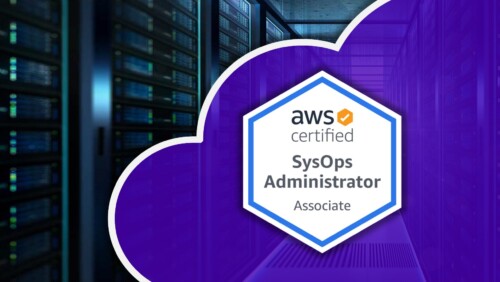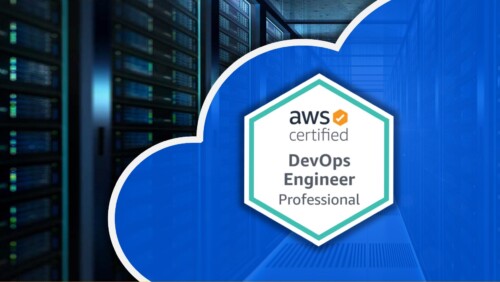Description
Overview
- 22:05:00 Hours
- 12 Months Access
- Presented by highly qualified, industry leading experts
The foundational CompTIA Cloud+ certification was designed to highlight your ability to evaluate and implement standard cloud deployments. As more and more organizations move toward cloud environments, this certification is becoming more in demand.
Your ability to manage workload migrations, manage cloud vendors to control costs, use automation and orchestration to bring business value from cloud solutions and ensure security of cloud implementations using cybersecurity best practices are proven through this certification.
Not only is this certification in high demand, it has also been proven to lead to salary increases because of the value you bring to an organization and its your gateway to more advanced vendor-specific cloud certifications.
Course Details
Objectives
- Cloud Specialist
- Cloud Engineer
- Cloud Developer
- System Administrator
- Systems Engineer
- Network Administrator
- Network Engineer
Audience
- Entry to mid-level cloud administrators.
- System and network engineers who wish to add cloud expertise to their skillset.
- IT professionals taking the first steps towards specialization in cloud technologies.
Prerequisites
Before starting your journey to become CompTIA Linux+ certified, we recommend that you meet the following prerequisites:
- Prior to starting Cloud+ exam preparation:
- CompTIA A+ and CompTIA Network+ certified.
- CompTIA Security+ certification recommended.
- Strong experience in system administration and networking.
- Prior to taking the CompTIA Cloud+ exam:
- Completion our CompTIA Cloud+ training program
- 2-3 years system administration experience.
- At least 12 months of Cloud admin hands-on experience in the lab or field.
- Thorough understanding of all topics detailed in the exam objectives.
Course Outline
The CompTIA Cloud+ certification teaches you to think critically and from the perspective of an experienced cloud user. Proving an individual’s ability to understand the configuration and deployment of cloud environments, systems, security, maintenance, and troubleshooting are all part of this certification.
Configuration and Deployment
- Given a scenario, analyze system requirements to ensure successful system deployment.
- Given a scenario, execute a provided deployment plan.
- Given a scenario, analyze system requirements to determine if a given testing plan is appropriate.
- Given a scenario, analyze testing results to determine if the testing was successful in relation to given system requirements.
- Given a scenario, analyze sizing, subnetting, and basic routing for a provided deployment of the virtual network.
- Given a scenario, analyze CPU and memory sizing for a provided deployment.
- Given a scenario, analyze the appropriate storage type and protection capability for a provided deployment.
- Given a scenario, analyze characteristics of the workload (storage, network, compute) to ensure a successful migration.
- Given a scenario, apply elements required to extend the infrastructure into a given cloud solution.
Security
- Given a scenario, apply security configurations and compliance controls to meet given cloud infrastructure requirements.
- Given a scenario, apply the appropriate ACL to the target objects to meet access requirements according to a security template.
- Given a cloud service model, implement defined security technologies to meet given security requirements.
- Given a cloud service model, apply the appropriate security automation technique to the target system.
Maintenance
- Given a cloud service model, determine the appropriate methodology to apply given patches.
- Given a scenario, apply the appropriate automation tools to update cloud elements.
- Given a scenario, apply an appropriate backup or restore method.
- Given a cloud-based scenario, apply appropriate disaster recovery methods.
- Given a cloud-based scenario, apply the appropriate steps to ensure business continuity.
- Given a scenario, apply the appropriate maintenance automation technique to the target objects.
Management
- Given a scenario, analyse defined metrics to determine the presence of an abnormality and/or forecast future needed cloud resources.
- Given a scenario, determine the appropriate allocation of cloud resources.
- Given a scenario, determine when to provision/deprovision cloud resources.
- Given a scenario, implement account provisioning techniques in a cloud environment to meet security and policy requirements.
- Given a scenario, analyze deployment results to confirm they meet the baseline.
- Given a specific environment and related data (e.g., performance, capacity, trends), apply appropriate changes to meet expected criteria.
- Given SLA requirements, determine the appropriate metrics to report.
Troubleshooting
- Given a scenario, troubleshoot a deployment issue.
- Given a scenario, troubleshoot common capacity issues.
- Given a scenario, troubleshoot automation/orchestration issues.
- Given a scenario, troubleshoot connectivity issues.
- Given a scenario, troubleshoot security issues.
- Given a scenario, explain the troubleshooting methodology.
Top of Form
CONFIGURATION AND DEPLOYMENT
- Overview
- Cloud Basics: Why and What
- Cloud Basics: Why and What Part 2
- Cloud Basics: Why and What Part 3
- Cloud Components: Interactions and Services
- Cloud Components: Interactions and Services Pt.2
- Cloud Deployment: Evaluate Readiness
- Cloud Deployment: Automation and Orchestration
- Cloud Deployment: Automation and Orchestration Pt2
- Cloud Deployment: Projectization
SECURITY
- Cloud Project: Deployment Workflow
- Cloud Project: Deployment Workflow Part 2
- Cloud Project: Post Deployment Configuration
- Cloud Project: Post Deployment Configuration Pt2
- Cloud Project: Manage Changes
MAINTENANCE
- Cloud Readiness: Quality Assurance
- Cloud Readiness: HA and LB
- Cloud Readiness: Deployment Load Testing
MANAGEMENT
- Cloud Security: Security Infrastructure
- Cloud Security: Organizational Compliance
- Cloud Security: Virtual Networking Design
- Cloud Security: Virtual Networking Design Part 2
- Cloud Security: Network Security Options
- Cloud Security: Component Security
- Cloud Security: Component Security Part 2
- Cloud Security: Implement Security Technologies
CLOUD COMPUTE
- Cloud Compute: Compute Storage
- Cloud Compute: Compute Storage Requirements
- Cloud Compute: Compute Storage Security
- Cloud Compute: Compute CPUs
- Cloud Compute: Compute Memory
TROUBLESHOOTING
- Cloud Authorization: IAM Technologies
- Cloud Authorization: IAM Technologies Part 2
- Cloud Authorization: Account Mgmt Policies
- Cloud Authorization: Access Control
- Cloud Authorization: Account Provisioning
CLOUD MIGRATION
- Cloud Migration: Deployment Types
- Cloud Migration: VMs and Containers
- Cloud Migration: Network, Storage and Data
CLOUD SYSTEMS
- Cloud Systems: System Maintenance
- Cloud Systems: System Maintenance Automation
CLOUD DATA PROTECTION
- Cloud Data Protection: Backup and Restore
- Cloud Data Protection: Backup and Restore Pt2
- Cloud Data Protection: Disaster Recovery Plans
- Cloud Data Protection: Business Continuity
CLOUD SYSTEMS ANALYSIS
- Cloud Systems Analysis: Monitoring
- Cloud Systems Analysis: Monitoring Part 2
- Cloud Systems Analysis: Reporting
CLOUD TROUBLESHOOTING
- Cloud Troubleshooting: Methodology
- Cloud Troubleshooting: Methodology Part 2
- Cloud Troubleshooting: Network Connectivity
- Cloud Troubleshooting: Network Connectivity Part 2
- Cloud Troubleshooting: Security Issues



